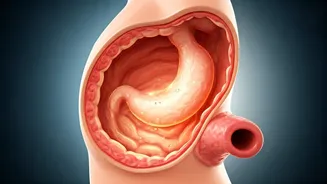Understanding Heartburn
Heartburn, a common ailment, occurs when stomach acid surges back into the esophagus, the tube connecting the mouth to the stomach. This happens because
of a faulty lower esophageal sphincter (LES), a muscle that typically prevents this backflow. Various factors can set off heartburn, including consuming specific foods, overeating, or specific lifestyle choices. Recognizing these triggers is the initial step toward managing the issue. Knowing what leads to heartburn can help you take preventative measures, like modifying your eating habits and being mindful of your diet, to minimize the likelihood of discomfort.
Gum Chewing for Aid
One effective strategy for mitigating heartburn is chewing gum. The process of chewing gum encourages the production of saliva, a natural substance that helps neutralize stomach acid. When saliva is swallowed, it helps cleanse the esophagus, taking away the acidic content that causes the burning sensation. Dr. Joseph Salhab, a gastroenterologist, supports this method, suggesting it provides a straightforward way to counter the effects of acid reflux. Choosing a sugar-free gum option can also be a healthier choice, as it avoids additional sugar intake that can potentially exacerbate digestive issues. This simple habit can serve as a quick and accessible method to soothe the discomfort of heartburn.
Diaphragmatic Breathing Relief
Another technique for alleviating heartburn involves practicing diaphragmatic breathing, often referred to as belly breathing. This method focuses on deep, controlled breaths that engage the diaphragm, a large muscle at the base of the lungs. By consciously using this muscle, you can reduce the pressure within the abdomen, a key factor that can contribute to acid reflux. Diaphragmatic breathing helps relax the esophageal sphincter, which, in turn, can help in lessening heartburn symptoms. Doing this exercise, especially after meals, is a practical way to support digestion. This practice not only provides immediate comfort but also fosters a sense of calm and well-being, complementing the physical relief from heartburn.
Walking After Meals
Post-meal walks are another simple yet effective remedy for heartburn. Walking after eating can aid digestion and reduce the likelihood of acid reflux. When you stand and move after a meal, it encourages the movement of food through your digestive system, preventing acid from lingering in the esophagus. This helps the stomach empty more efficiently. Even a short walk can make a difference in your digestive health, lowering the chance of heartburn. Incorporating a post-meal walk into your routine is a simple adjustment that can contribute to long-term digestive well-being and overall health, providing both physical ease and an added sense of relaxation.











